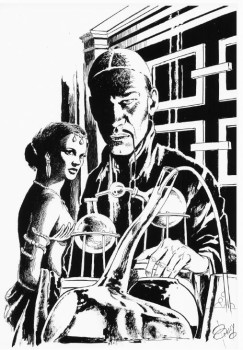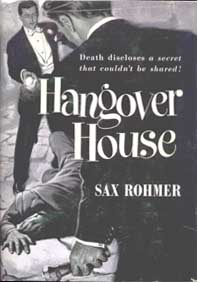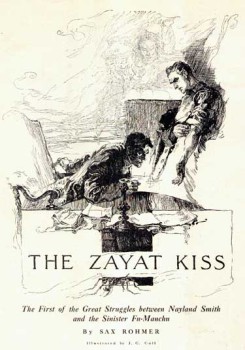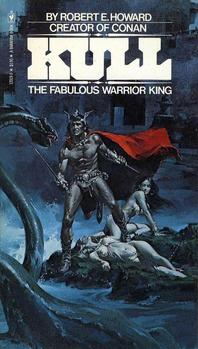Blogging The Insidious Dr. Fu-Manchu by Sax Rohmer, Part Three – “The Clue of the Pigtail”
NOTE: The following article was first published on March 28, 2010. Thank you to John O’Neill for agreeing to reprint these early articles, so they are archived at Black Gate which has been my home for over 5 years and 260 articles now. Thank you to Deuce Richardson without whom I never would have found my way. Minor editorial changes have been made in some cases to the original text.

 “The Clue of the Pigtail” was the second installment of Sax Rohmer’s serial, Fu-Manchu. It was first published in The Story-Teller in November 1912. It would later comprise Chapters 4-6 of the novel, The Mystery of Dr. Fu-Manchu [US title: The Insidious Dr. Fu-Manchu] published the following year. Rohmer makes a drastic switch from the weird menace of “The Zayat Kiss” to a more traditional Yellow Peril storyline. The influence of Sir Arthur Conan Doyle’s Sherlock Holmes mysteries is much less pronounced the second time around. This episode and the one that immediately follows it (“Redmoat” which we will examine in greater detail next time) see Rohmer instead delve deeper into the background of his Yellow Peril mystery. This transition is a necessary one to provide Dr. Fu-Manchu with a plausible motive for the weird deaths he was directing against his political enemies in the first story.
“The Clue of the Pigtail” was the second installment of Sax Rohmer’s serial, Fu-Manchu. It was first published in The Story-Teller in November 1912. It would later comprise Chapters 4-6 of the novel, The Mystery of Dr. Fu-Manchu [US title: The Insidious Dr. Fu-Manchu] published the following year. Rohmer makes a drastic switch from the weird menace of “The Zayat Kiss” to a more traditional Yellow Peril storyline. The influence of Sir Arthur Conan Doyle’s Sherlock Holmes mysteries is much less pronounced the second time around. This episode and the one that immediately follows it (“Redmoat” which we will examine in greater detail next time) see Rohmer instead delve deeper into the background of his Yellow Peril mystery. This transition is a necessary one to provide Dr. Fu-Manchu with a plausible motive for the weird deaths he was directing against his political enemies in the first story.
Most critics cite the Boxer Uprising of 1900 as the beginning of Yellow Peril fiction. While that inaugural international conflict of the 20th Century certainly did much to incite reader interest, Yellow Peril stories had existed prior to the series of massacres of Western missionaries that would ultimately spell the end of the Manchu Dynasty and be responsible for much of the ideological and socio-political transformation of the globe in the last century. A brief overview of the most prominent Yellow Peril stories prior to Sax Rohmer’s introduction of Dr. Fu-Manchu may prove beneficial.







 Today we’re talking to
Today we’re talking to 





